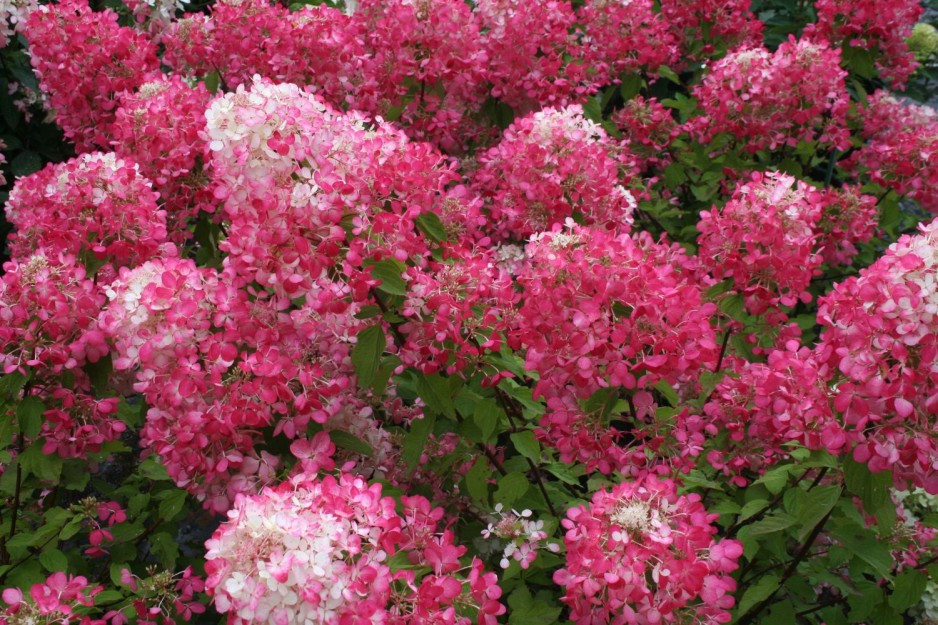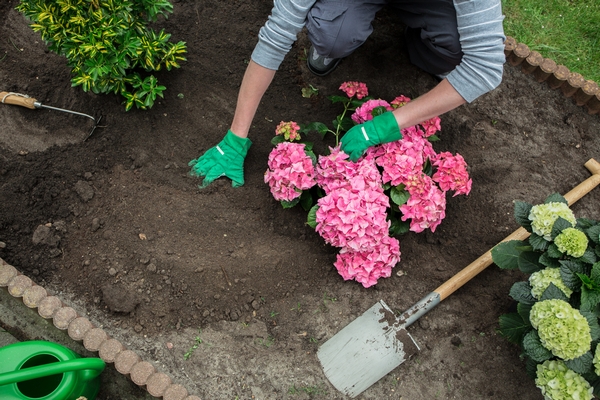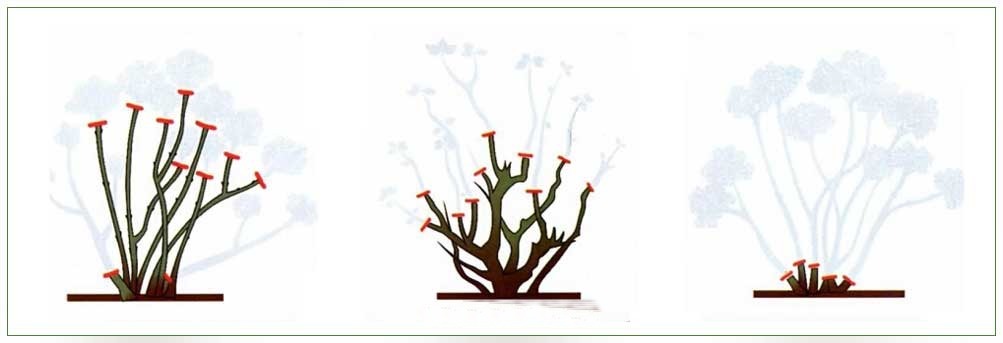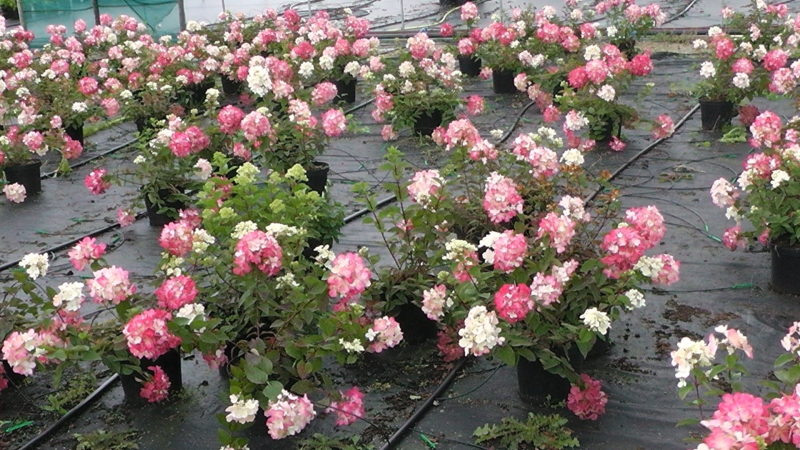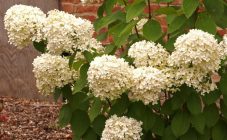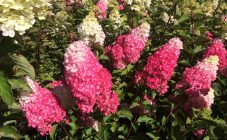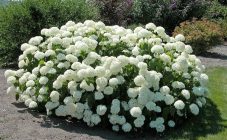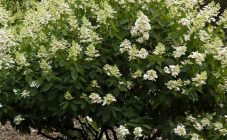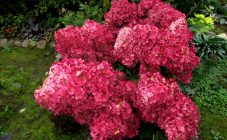Content:
Hydrangea is a fairly common flowering plant that has a place both in private gardens and in city parks. Not so long ago, a French nursery specializing in the selection of new varieties of this crop, has bred a new amazing variety called Diamant Rouge panicle hydrangea. Over the past several years, the variety has been participating in various exhibitions and has received numerous awards, medals for excellent varietal qualities. This variety has excellent winter hardiness, it is not as whimsical to care for as its relatives.
Hydrangea Diamond Rouge: description and characteristics of the variety
The plant is a shrub or small compact tree. Hydrangea paniculata Diamond Rouge stands out for its unusual appeal. Plant height reaches 1.5 meters, and the crown diameter is approximately 1.4 meters.
Flowers are formed in large sizes, gather in inflorescences, which are characterized by the shape of panicles. The length of each inflorescence varies from 30 to 40 cm. They are formed, as a rule, on the shoots of the current year. The flowering of the culture begins in the second - third decade of June (depending on weather and climatic conditions). At first, the flowers are white, but over time, a characteristic pink tint appears. With the arrival of autumn, Moulin Rouge hydrangea flowers take on a rich red hue.
Duration of flowering - from mid to late June to September.
Hydrangea leaves Diamond rouge have an elongated oblong shape, the surface of the leaf plate is slightly pubescent and velvety. Throughout flowering, the color of the leaves changes gradually from rich dark green to orange. This feature makes the plant even more unusual and attractive.
The root system is superficial, extending beyond the crown. Most Far Eastern plants have the same structural and developmental features, preferring coolness. That is why, every year, soon after the onset of spring, it is important to mulch the trunk circle. Thanks to this procedure, it will be possible not only to retain moisture in the soil, but also to maintain fertility.
Flowers after planting begin to form no earlier than three years later. The plant has excellent frost resistance.
The main characteristics of the variety:
- Form: compact, upright deciduous shrub. The characteristic features of the species are compactness and decorative flowering.
- Plant group: deciduous.
- The growth rate is average.
- The root system is not well developed, not deep and branched.
- Photophilous culture, should germinate in sunny areas or in partial shade.
- Hydrangea is moisture-loving and needs regular watering.
Planting rules
The plant belongs to the light-loving, but readily develops in partial shade. The optimal time for planting outdoors is early spring or autumn. The culture is difficult to tolerate a moisture deficit, in dry seasons it begins to wither, but it actively develops in moist soil. That is why the gardener must closely monitor the frequency and quality of watering.
The planting hole must be made wide enough, approximately 70 cm in diameter or more. This is due to the branched root system, all roots in the pit must be evenly distributed. Previously, organic and mineral fertilizers are introduced into the pit, watered abundantly.
Planting hydrangea Diamond Rouge in open soil in the fall is possible only in the southern regions. Before disembarking, you need to choose the right place, the following tips will help with this.
- This type of culture does not tolerate direct sunlight, therefore, the optimal places for growth are semi-shaded. Under the scorching sun, its inflorescences begin to shrink, the plant slows down in growth.
- The soil. Hydrangea prefers fertile loamy or clayey soils. It develops very poorly in sandy soil. The most suitable soil for plant development is a loose structure, high concentration of nutrients, fertile, moderately moist with an acidic or neutral environment. When grown in such conditions, the flowers acquire a rich shade. You can create an acidic environment with ordinary whey. When it enters the soil, it creates favorable conditions for the development of bacteria, the vital activity of which leads to soil acidification. Also, an acidic environment is created using brown peat, semi-rotten needles and sawdust.
- Hydrangea Diamant Rouge is a moisture-loving culture, therefore it does not tolerate the neighborhood with the same moisture-loving plants. Recommended to be planted under the crown of ground cover flowers.
Algorithm for planting and transplanting panicle hydrangea:
- Pre-prepare a planting pit with dimensions of at least 40 * 50 * 50 cm.For some seedlings, sizes or more will be required.
- The planting or transplanting process takes no more than two days in total. On the first day, a landing site is prepared, abundantly filled with water. It is important that the soil absorbs all moisture.
- Immediately before planting, mineral and organic fertilizers are poured into the pit. Optimal composition: rotted humus, sand, peat and fertile soil.
- It is also necessary to add potassium sulfate, superphosphate and urea to the resulting composition. All components are thoroughly mixed and evenly distributed over the bottom of the pit.
- The preparatory work is over. Now the seedling is carefully lowered into the pit, as it falls asleep with soil, it is tamped so that cavities do not form between the roots.
Hydrangea Diamant Care
Caring for this representative of ornamental shrubs is simply necessary; without the participation of an agronomist, it will not be possible to achieve the desired beauty.
A newly planted shrub needs regular watering for quick root establishment. In hot weather for every 1 sq.m. soil will need to pour about 30 liters of water. Watering frequency is once a week. In rainy weather, it is advisable to reduce the amount of liquid. The soil under the ornamental shrub should always be moist. To create optimal conditions, you can resort to mulching the near-stem circle with sawdust. During watering, a small amount of potassium permanganate can be added to the water for disinfection. The water should be a pale pink color.
Fertilizers must be applied at least four times during the growing season. All of the following actions will ensure the normal development and timely flowering of the ornamental bush.
- It is advisable to apply the first top dressing soon after the onset of spring, during the formation of inflorescences. In this case, it is best to use organic fertilizers such as slurry.
- The time for the second feeding comes already during the ripening of the buds. In this case, it is better for gardeners to use formulations with potassium, superphosphates and urea.
- The optimal composition for the third feeding is a complex of mineral fertilizers. The feeding time depends on the flowering intensity of the shrub. If all the buds have already blossomed, it's time to start the procedure. Such feeding will prolong the flowering period of the plant.
- The fourth feeding is carried out during the preparation of the bush for the upcoming wintering. It is best to use special chemicals designed for hydrangeas. You can buy drugs on the market or in a specialized store.
Pruning of a decorative bush is carried out as necessary in order to give the crown the correct shape and remove damaged, affected and non-bearing branches. However, with the onset of autumn, mandatory pruning is required to prepare the plant for the upcoming wintering. This is necessary to rejuvenate the culture; therefore, old shoots must be removed.
The cut is carried out in such a way that after that only hemp with a length of no more than 5-6 cm remains. To form a bush, first of all, it is necessary to select 5-10 strong shoots. They must be cut in such a way that no more than 5 buds remain on each of them. Thanks to this procedure, all nutrients will be directed to the formation and strengthening of young shoots.
Preparing for winter
Despite the fact that this type of hydrangea belongs to cold-resistant plants, it is still necessary to cover it for the winter.
Shelters are carried out as follows:
- The use of rotted manure. Around the shrub, it must be spread out in a small layer.
- Effectively use fallen leaves or peat. The layer of covering material should be at least 15-20 cm.
- If the gardener is worried about the safety of the branches, a frame can be built for the shrub, which will create a kind of greenhouse and protect the plant from bad weather.
It is impractical to carry out any additional manipulations. When preparing a plant for wintering, it is important to trim the bush and cover it.
Reproduction
The most common way to propagate a culture is by cuttings.
The trimmed parts of the branches are placed in water for several days, and then a stalk with at least 3 internodes is formed from it. The lower cut must be treated with a growth stimulant and planted at home in a container to a depth of 2/3.
It is recommended to grow cuttings indoors until next year. With the onset of warmth, when the soil warms up, the grown bushes can be transplanted into open ground.
Diseases and pests
In this matter, Diamond Rouge hydrangeas must be given due attention. The amazingly beautiful shrub is often affected by diseases or attacked by insect pests. To reduce the likelihood of injury, all preventive measures must be followed.
The main diseases of hydrangea Diamond Rouge:
- Powdery mildew - fungal disease. It is capable of affecting not only garden but also indoor plants.The main symptom is the formation of spots with an oily structure and a dark coating. The cause of the lesion is a pathogenic fungus that is in the soil. The optimal conditions for the intensification of the disease are high humidity and high temperature. In early manifestations, the disease is fought with a solution of copper sulfate and soap shavings. The bush is irrigated with the resulting composition. If the procedure does not bring the desired result, you will have to use chemical fungicides.
- Tracheomycotic wilting- no less common pathology of this variety. The source of the disease is all the same pathogens that live on the remains of other plants. Myceliums affect the root system, and then germinate through the branches and trunk. If all the necessary measures are not taken in a timely manner, the shrub will die. To prevent the development of the disease, the seedling must be treated with fungicidal substances before planting. If the plant was still damaged, it is necessary to carefully remove all affected fragments and process the cut points and the soil near the shrub with a solution of potassium permanganate. It is also recommended to use wood ash and powdered sulfur for prevention.
In addition to diseases, insects can also affect the Diamond Rouge hydrangea. The most common among them are gall nematodes, slugs and garden snails, the bug and its larvae, aphids, spider mites, pennies, nettle weevil, fawn leaf beetle, leafworm, butterfly caterpillars and greenhouse trip. To prevent their formation, it is necessary to follow all the rules of agricultural technology.
Hydrangea paniculata Diamond Rouge is an amazingly beautiful plant that will delight the eye not only of an agronomist, but also of all guests in the house. Before purchasing planting material, you must familiarize yourself with the rules of planting and care.
